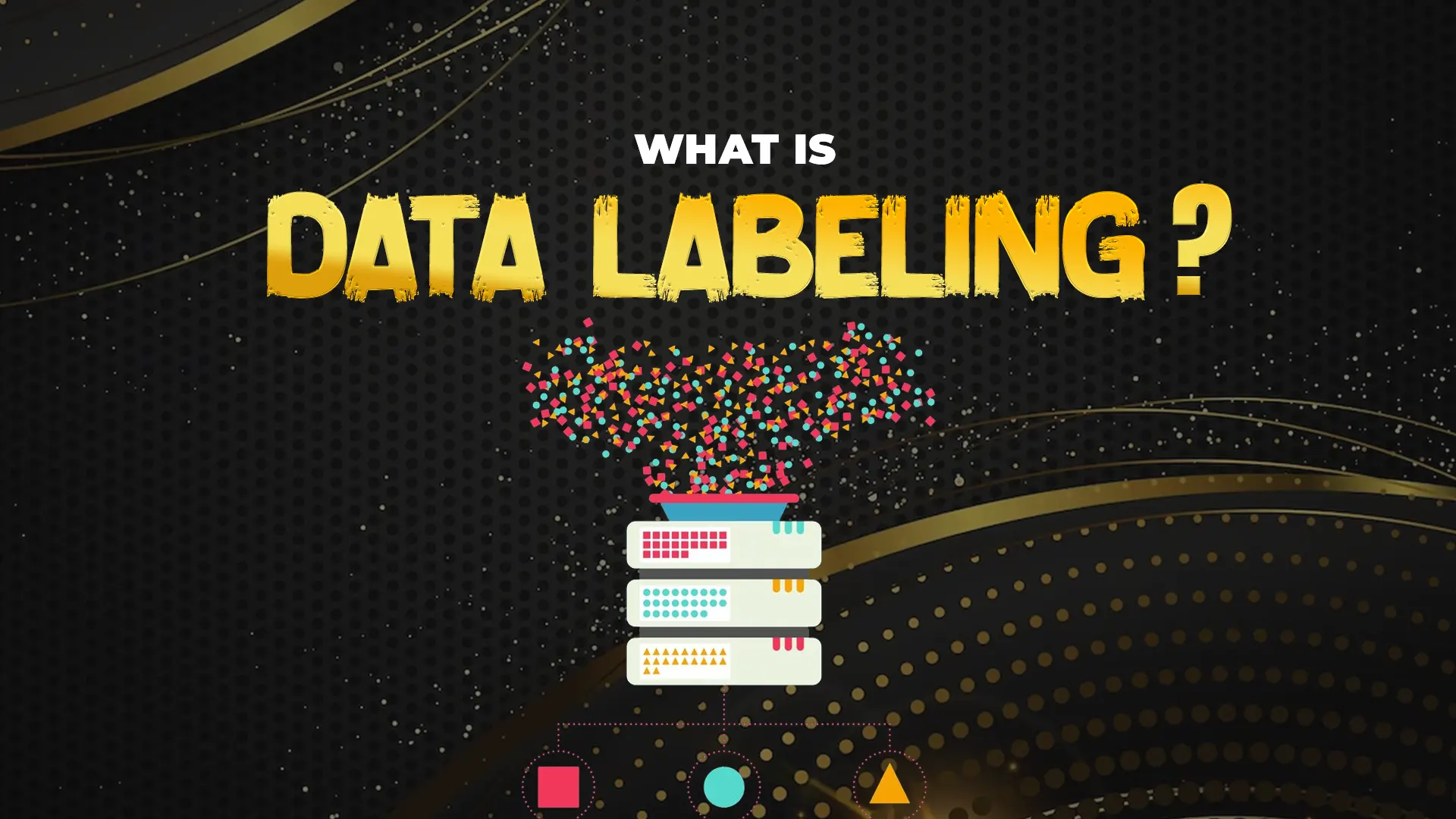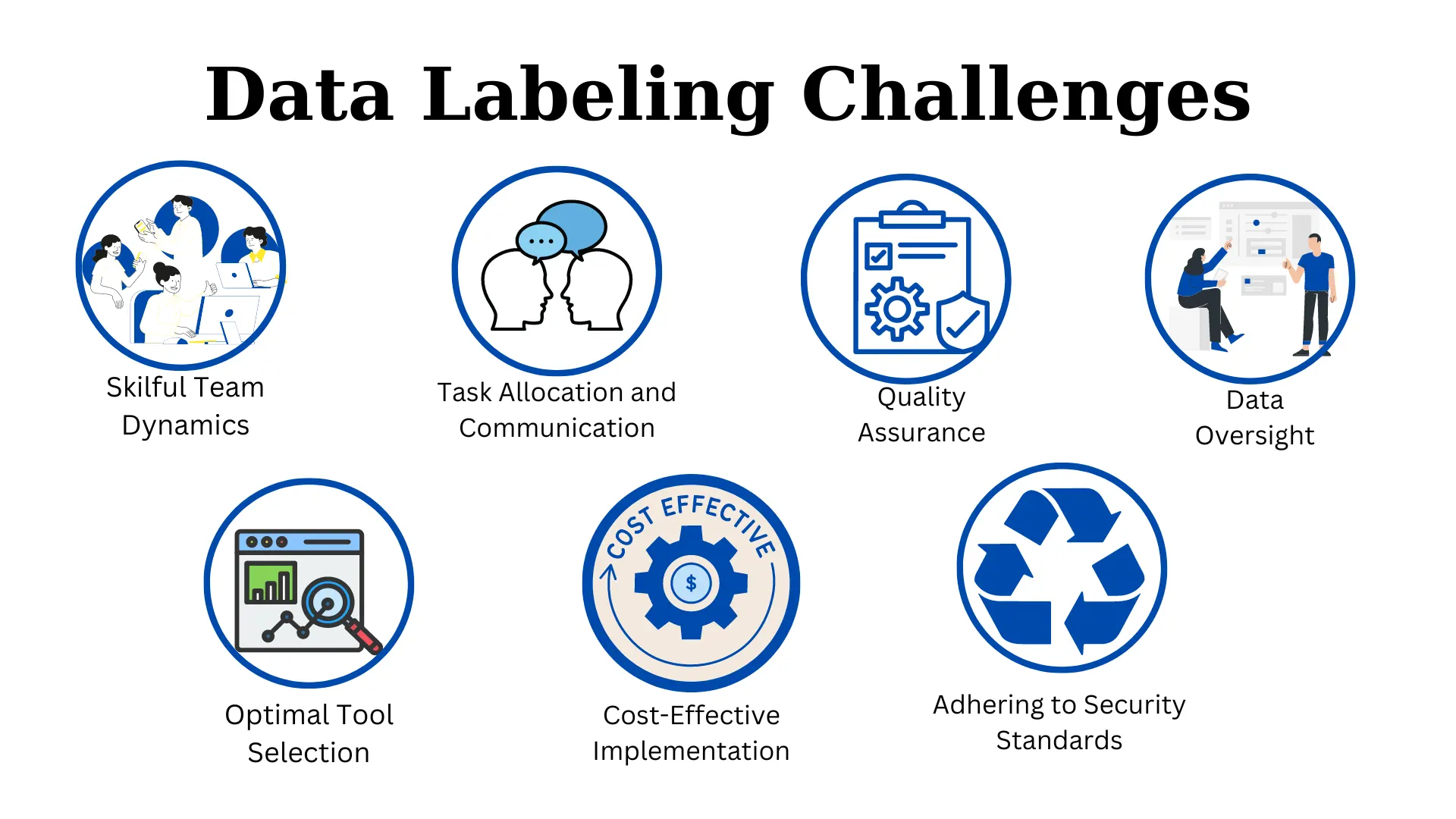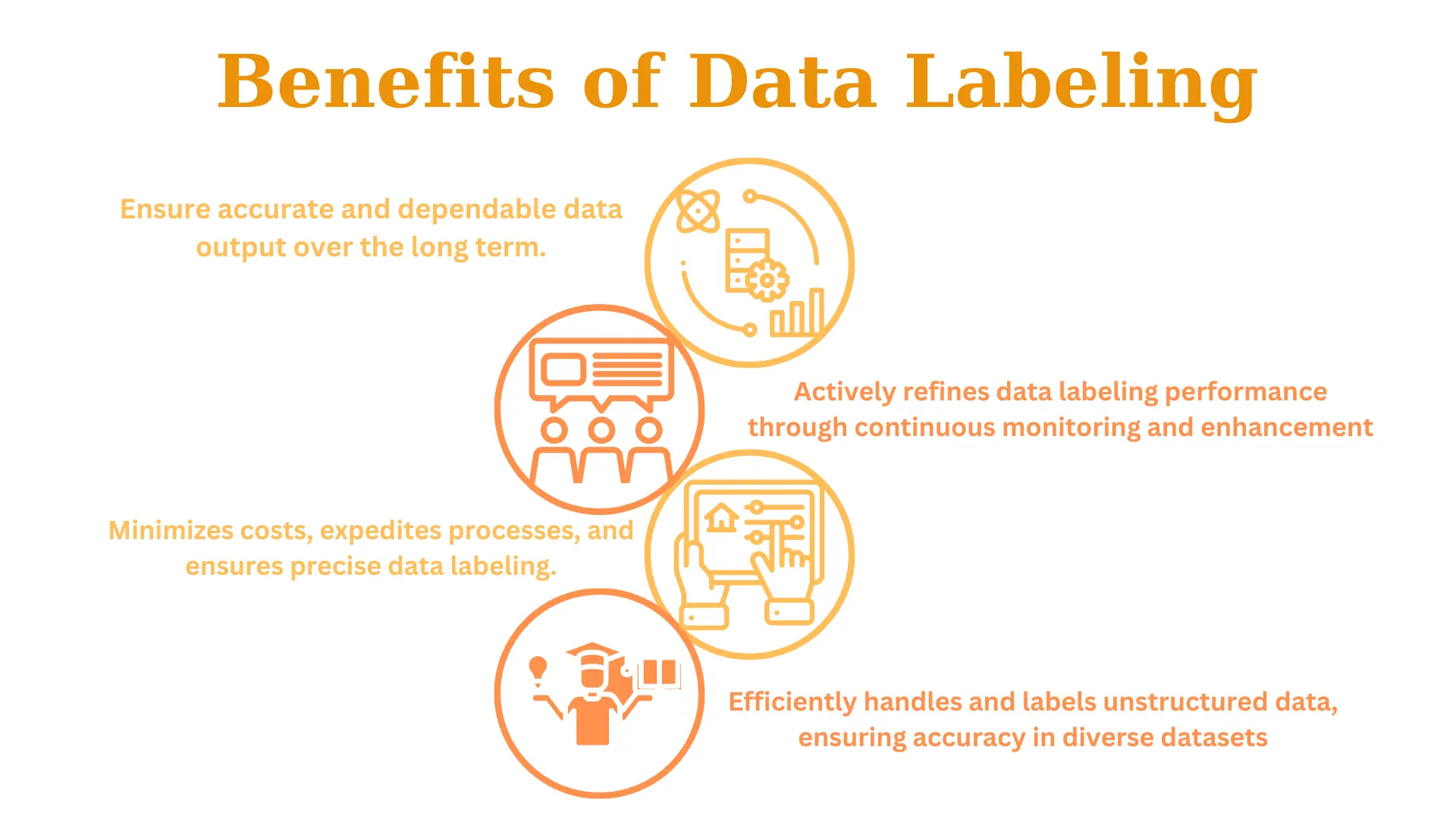Data labeling emerges as a crucial pre-processing step in the development of machine learning models. This practice involves tagging raw data, such as images and text files, to provide context for accurate predictions. This blog explores the intricacies of data labeling, its methodologies, challenges, and its applications.
Why is Data Labeling Important?
It serves as the backbone for various machine learning and deep learning applications, including computer vision and natural language processing (NLP). By assigning labels to datasets, analysts can isolate variables, enabling the selection of optimal predictors for model training. Human-in-the-loop (HITL) participation is vital, guiding the data labeling process and contributing to the creation, training, fine-tuning, and testing of ML models.
Labeled Data vs. Unlabeled Data:
Understanding the distinction between labeled and unlabeled data is essential. Labeled data is employed in supervised learning, requiring time and resources for accurate annotations. Unlabeled data, on the other hand, is more accessible but limited in its usefulness. Combining both types for semi-supervised learning reduces the need for extensive manual labeling while providing a substantial annotated dataset.
Benefits and Challenges of Data Labeling:
While the allure of AI and ML advancements is compelling, the efficiency of data labeling relies significantly on the concerted efforts of data scientists and engineers.Lets delves into the advantages and challenges encountered in the intricate journey of data labeling.
Challenges in Data Labeling:
Workforce Management:
Skillful Team Dynamics are crucial in it, requiring a proficient team of data scientists and engineers for high-quality work. The orchestration of tasks, comprehension of specific domains, and seamless communication present perpetual challenges. Quality Assurance involves overcoming cultural and language barriers, ensuring data precision and validation.
Data Oversight:
Subjectivity Challenges arise from personal biases and cultural nuances within the team. Objectivity Concerns stem from data illiteracy, potentially leading to inaccurate data labels and AI misinterpretations.
Optimal Tool Selection:
Judicious choices in software and skilled labelers are paramount for a successful ML process. Awareness and utilization of open-source tools for data labeling are indispensable to meet specific data requirements.
Cost-Effective Implementation:
In-House Tool Development can be advantageous but may escalate costs and impede market deployment timelines. Transparency Deficiency in the data labeling process can impact funding and project sponsorship, posing challenges in cost-effective implementation.
Adhering to Security Standards:
Compliance Challenges involve conforming to global data security standards like GDPR and CCPA, imperative for data labeling companies. Impact on Operations may occur if falling short of data security regulations, hindering company operations and the data labeling process.
Benefits of Data Labeling:
Consistent Data Output:
Reliability in Consistent Data Output is achieved through In-House Tools, ensuring not only accuracy but also long-term dependability. The use of these tools guarantees a stable and reliable stream of data results over an extended period.
Iterative Feedback System:
Under the Iterative Feedback System, Continuous Performance Enhancement is a key aspect. The incorporation of an annotation feedback loop not only monitors but actively enhances data labeling performance over time. This iterative approach ensures the continual refinement of the labeling process.
Automated Labeling Processes:
The Automated Labeling Processes contribute not just to efficiency but also to precision. By employing task-specific algorithms, the system not only minimizes costs but also expedites the labeling process, resulting in accurate and timely labeled data.
Proficiency in Deep Learning:
Proficiency in Deep Learning is highlighted by its Efficient Handling of Unstructured Data. Deep learning, coupled with ML algorithms, stands out in its ability to analyze and label unstructured data efficiently. This proficiency is especially valuable in handling diverse and complex datasets, ensuring accurate outcomes.
Despite the intricate challenges that surface in the data labeling journey, the invaluable benefits, including consistent data output, iterative feedback systems, automated labeling, and proficiency in deep learning, underscore its pivotal role in the triumph of AI and ML endeavors. Strategic investments in precise data labeling are indispensable for companies aspiring to harness the economic advantages of cutting-edge technologies.
Best Practices in Data Labeling:
Data labeling is a fundamental process in developing machine learning models, requiring careful execution and adherence to best practices. Here’s a structured overview of key steps and considerations:
Collect Diverse Data: Ensure your dataset encompasses a wide range of scenarios relevant to your model’s application. Whether through manual collection, open-source datasets, or synthetic data generation, diversity minimizes bias and improves model performance.
Set Clear Annotation Guidelines: Informative and concise guidelines are essential for accurate labeling. Illustrate examples and establish the end goal to ensure consistency and precision among annotators.
Implement Quality Assurance: Incorporate a robust QA process to verify the accuracy of labeled data. Regular audits, targeted QA, and random checks help maintain data integrity and resolve discrepancies promptly.
Choose an Effective Annotation Pipeline: Select an annotation pipeline tailored to your project needs to optimize efficiency. Streamline the annotation process with features such as prioritized labels and automated workflows.
Maintain Open Communication: Facilitate seamless communication with your labeling team to enhance productivity and address any concerns promptly. Regular feedback sessions ensure alignment with project goals and guidelines.
Run Pilot Projects: Before full-scale implementation, conduct pilot projects to evaluate workforce performance, refine guidelines, and identify potential challenges. Pilot projects provide valuable insights for project planning and improvement.
When selecting a data labeling platform, consider factors such as inclusive tools, integrated management systems, quality assurance processes, privacy and security measures, and technical support. Prioritize platforms that align with your project requirements and ensure data confidentiality and reliability.
Applications of Data Labeling:
Training Data for Machine Learning Models: Essential for training supervised ML models, providing necessary tags, classifications, or annotations.
Evaluation and Validation of Models: Leverages labeled data to gauge the effectiveness of the model, assessing accuracy, precision, and recall.
Active Learning and Semi-Supervised Learning: Enhances performance by strategically labeling the most informative data points through active learning. Semi-supervised learning efficiently combines labeled and unlabeled data, ensuring cost-effective training.
Data Pre-processing and Augmentation: Generates enriched datasets by introducing variations, transformations, or synthetic samples. Enhances model robustness and broadens its generalizability.
Anomaly Detection and Fraud Prevention: Labels data to identify irregularities or potential fraudulent activities. Employs labeled datasets to train models for proactive fraud identification, risk assessment, and security enhancement.
Natural Language Processing (NLP) Tasks: Annotates data for tasks like named entity recognition, sentiment analysis, and text classification. Trains models to effectively extract valuable information from textual data, serving diverse applications.
Computer Vision Applications: Labels data for crucial tasks such as object identification, image segmentation, facial recognition, and autonomous driving. Trains models to comprehend and interpret visual input accurately and efficiently
Conclusion
In the dynamic world of machine learning, data labeling emerges as a pivotal force shaping the accuracy and efficiency of models. From understanding the importance of labeling to navigating the challenges and adopting best practices, this blog delves into the intricate world of data labeling. As technology continues to progress, the role of data labeling in unlocking the full potential of machine learning remains indispensable.
Ready to revolutionize your machine learning projects? Explore Togwe for seamless data annotation and model training. Start optimizing your AI solutions today!
FAQ’s
What is data labeling?
Data labeling is a crucial step in the development of machine learning models, involving the tagging of raw data, such as images and text files, to provide context for accurate predictions. This process allows machine learning algorithms to understand and learn patterns within the data.
What are the benefits of data labeling?
The benefits of data labeling are manifold. It provides consistent data output, facilitates an iterative feedback system for continuous improvement, enables automated labeling processes for cost and time efficiency, and enhances proficiency in handling unstructured data through deep learning. These benefits contribute to the success of AI and ML endeavors.
How to do data labeling?
Data labeling can be accomplished using diverse methods, comprising both manual processes and automated approaches.
Manual Data Labeling:
Human Annotation: Involves individuals manually assigning labels to data, ensuring a human touch in the labeling process.
Crowdsourcing: Utilizes a collective effort from a group of individuals to annotate data, often employed for large-scale labeling tasks.
Automated Data Labeling:
Pre-trained Models: Involves leveraging models that have been trained on existing data to automatically label new data, providing efficiency in the labeling process.
Semi-Supervised Learning: Combines both labeled and unlabeled data, optimizing the use of human effort while reducing the need for extensive manual labeling.



